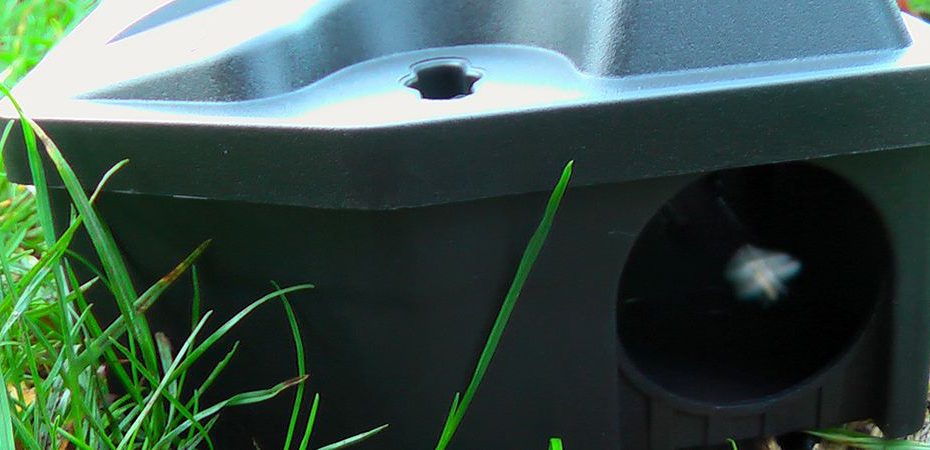The lethal impact of toxic rodenticides reaches far beyond their intended target: rodents. Like other pesticides, scientists are uncovering just how ubiquitous rodenticides are in the environment. The sight of the black bait station boxes outside buildings is so common that people may not pay them much attention. Some pest control companies make people believe that poisoning is the best strategy to reduce rodent infestations. However, if the rodents persist despite this effort, can we truly say that putting poison out on an ongoing schedule is an effective and sustainable strategy? And at what cost to non-target wildlife? I propose that we can do better.
One of the great horned owl territories in Durham Region that a friend and I keep tabs on has lost breeding females in the past. Last year, we were able to recover the carcass of a female and transport it to the Canadian Wildlife Health Cooperative (CWHC) for a necropsy. We learned this owl had three distinct anticoagulant rodenticides present in its tissue, with levels of bromadiolone, which is a widely used second-generation anticoagulant rodenticide, high enough to support a pathological diagnosis of anticoagulant rodenticide poisoning.
Rodent bait station © Matt Adams CC BY-SA 2.0
My experience is not uncommon. Within the naturalist community, I know of other great horned owls and red-tailed hawks in the GTA that have died due to suspected secondary rodenticide toxicity – when apex predators ingest rodents that have consumed rodenticides from baited traps. Research done on rodenticide’s effect on the environment shows that it is more pervasive than we thought. Rodenticides impact many non-target animals, such as birds, particularly owls and raptors, mammals, invertebrates, pets and even humans.
Rodenticides may ultimately carry too much collateral damage because they are persistent, bioaccumulative and toxic. Pest control companies should help people navigate rodent issues using far more effective strategies like exclusion of rodents from entry points to buildings, and proper containment of food and waste. Live traps that don’t involve introducing rodenticides into the environment are alternative options.
Great-horned owl © Michael Hunter CC BY 2.0
Federal legislation restricts the purchase and use of rodenticides to licensed professionals. Despite these restrictions, research shows these toxic chemicals are still ending up in the environment and killing non-target wildlife.
Banning rodenticides is something I think we can work towards. When I received the necropsy report from the great horned owl, I set up an online petition that now has over 16,000 signatures. My friends and I gave delegations to municipalities and conservation authorities, urging them to stop using rodenticides on their properties. I wrote a letter to the Durham Regional Council signed by many naturalist groups that are part of Ontario Nature’s Nature Network. I am happy to say that some of this work has led to positive change already. For example, the Central Lake Ontario Conservation Authority heard our delegation and enacted a rodenticide policy, committing to not use rodenticide on any of their properties. And I am grateful that progressive municipalities like Pickering and Clarington have run pilot programs to eliminate rodenticides and educate the public that we can point to for precedent.
Northern harrier hunting in grassland habitat © Terry Parker
I urge everyone to seek alternatives to rodenticides and advocate for wildlife by asking your municipal government to ban the use of rodenticides at municipal buildings. And if you find wildlife that you suspect might be poisoned, please contact your local wildlife rehabilitation centre and contact CWHC to submit carcasses.
Resources
The post How to Keep Rodenticides Out of the Environment appeared first on Ontario Nature.
